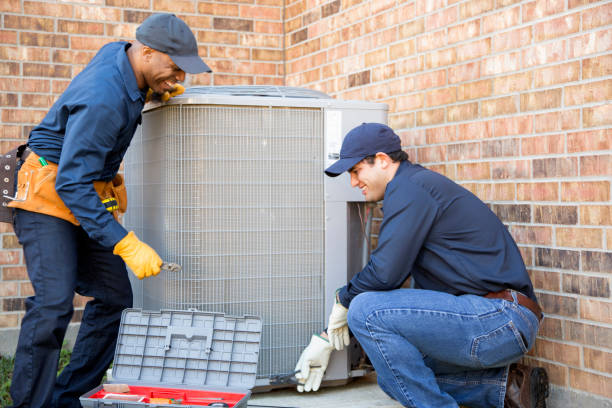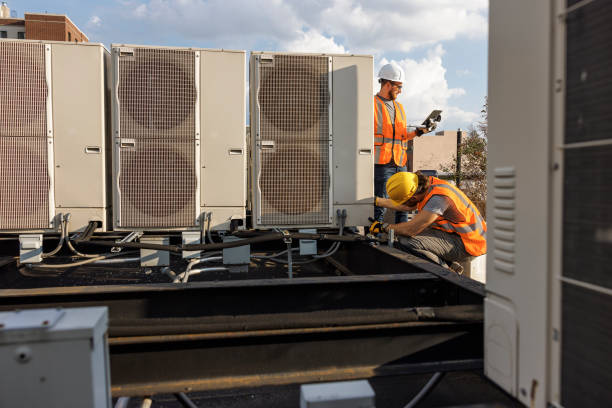The Ultimate Guide to Maintaining a Perfect Indoor Climate
Introduction
A comfortable indoor climate is essential for a healthy and enjoyable home. Temperature, humidity, and air quality all play a role in maintaining the perfect environment. If any of these factors are off balance, it can lead to discomfort and even health issues. Proper maintenance and smart choices can help keep your home at the right temperature year-round. This guide will cover everything you need to know about achieving the ideal indoor climate.

Importance of Regular Maintenance
Regular maintenance is key to keeping your heating and cooling system running efficiently. A well-maintained system ensures even temperature distribution and lower energy bills. Dirty filters, clogged vents, and malfunctioning components can reduce efficiency and impact air quality.
If you're searching for HVAC services near me, professional maintenance can help identify and fix potential issues before they turn into costly repairs. Experts recommend scheduling routine check-ups at least twice a year. This ensures your system runs smoothly and provides consistent comfort.
Controlling Indoor Temperature
Maintaining the right temperature is crucial for comfort and efficiency. A programmable thermostat helps regulate temperatures automatically. Setting it to adjust based on your schedule can reduce energy usage.
Proper insulation also plays a role in maintaining indoor temperature. Poor insulation can lead to heat loss in winter and excess heat in summer. Sealing gaps and using energy-efficient windows can help stabilize indoor temperatures.
Managing Indoor Humidity
Humidity levels impact both comfort and air quality. Too much humidity can promote mold growth, while too little can cause dryness and irritation. A good balance is between 30-50%.
Using a dehumidifier in humid climates can help prevent excess moisture. In drier regions, a humidifier can add moisture to the air. Ventilation, such as using exhaust fans, can also help regulate humidity levels effectively.
Improving Air Quality
Air quality is just as important as temperature and humidity. Pollutants, dust, and allergens can build up and affect respiratory health. Regularly changing air filters can prevent dust accumulation.
Using an air purifier can help remove contaminants and improve indoor air quality. Houseplants can also absorb pollutants and provide fresh oxygen. Ensuring proper ventilation allows fresh air to circulate and prevents indoor air from becoming stale.
Smart Technology for Climate Control
Technology has made it easier to maintain an ideal indoor climate. Smart thermostats learn your habits and adjust temperatures accordingly. Some models can be controlled remotely via smartphone apps.
Smart vents can regulate airflow in different rooms, ensuring consistent comfort. Sensors can detect temperature fluctuations and adjust settings automatically. Investing in smart home technology can improve efficiency and reduce energy costs.
Interesting Points
- Ceiling fans can improve airflow and reduce reliance on heating and cooling systems.
- Sleeping in a cooler room (between 60-67°F) can improve sleep quality.
- Using blackout curtains can help maintain indoor temperatures by blocking heat or retaining warmth.

Choosing the Right Service Provider
Finding a reliable heating and cooling expert is crucial for proper maintenance. Look for licensed and experienced professionals who offer comprehensive services. Checking customer reviews and asking for references can help you make an informed decision.
If you're searching for an HVAC Company near me, ensure they provide emergency repairs and energy-efficient solutions. A good company should offer transparent pricing and professional customer support.
FAQs
1. How often should I change my air filter?
You should change your air filter every 1-3 months, depending on usage and air quality. Homes with pets or allergies may require more frequent changes.
2. What temperature should I set my thermostat to for energy savings?
Setting your thermostat to 68°F in winter and 78°F in summer can help reduce energy costs while maintaining comfort.
3. How can I tell if my home has poor air quality?
Signs of poor air quality include persistent allergies, musty odors, excess dust, and difficulty breathing indoors. Using an air purifier and improving ventilation can help.
What's Your Reaction?




















